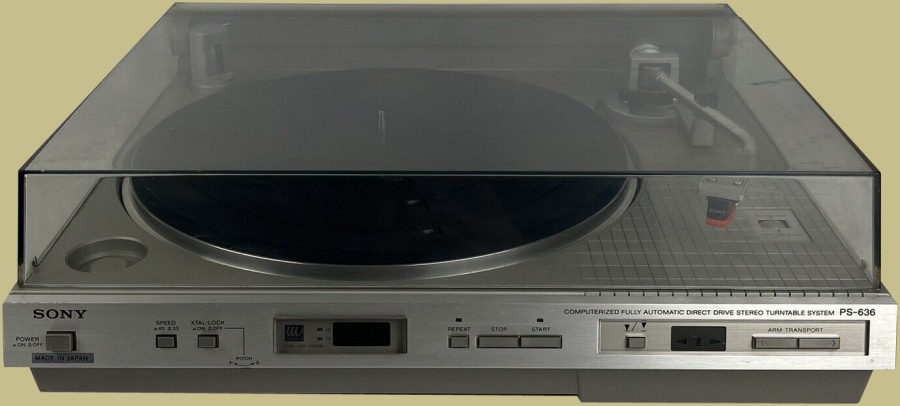
The Sony PS-636 is a bit of an enigma. There’s not a lot of information available for this turntable. It was manufactured around 1980 and Sony seems to have dived headlong into computerized circuitry with this model. It was made in Japan and appears to have been on the market until 1982.
It’s a computerized, fully automatic, direct drive, quartz lock turntable that can run at 45 or 33 rpm.
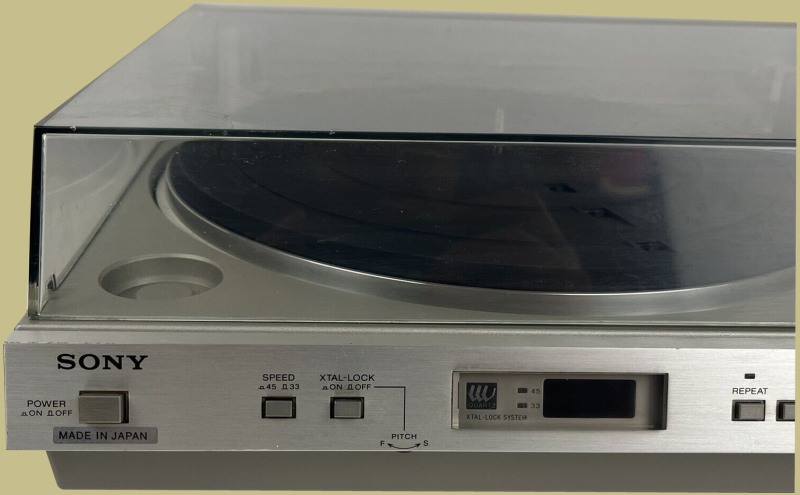
The PS-636 isn’t the most elegant or attractive turntable you’ll ever see. In fact, it has a more robotic or industrial look to it. I think Sony wanted to emphasize the PS-636’s technology rather than its aesthetics. And, for an early 1980’s turntable it was chock full of tech features like an XTAL speed lock system, arm transport controls, and repeat.

When the XTAL (or Crystal Lock) system is functioning properly the PS-636 locks in the speed of the platter by utilizing a magnetic strip underneath the platter for feedback. The XTAL system makes for a very steady and smooth platter rotation. The XTAL system can be turned on or off via a button on the front panel. When it’s off you can choose the preferred speed via the speed button to the left of it.
The small window at the center of the front panel has LED’s indicating either 33 or 45 speed as well as a green speed strobe indicator.
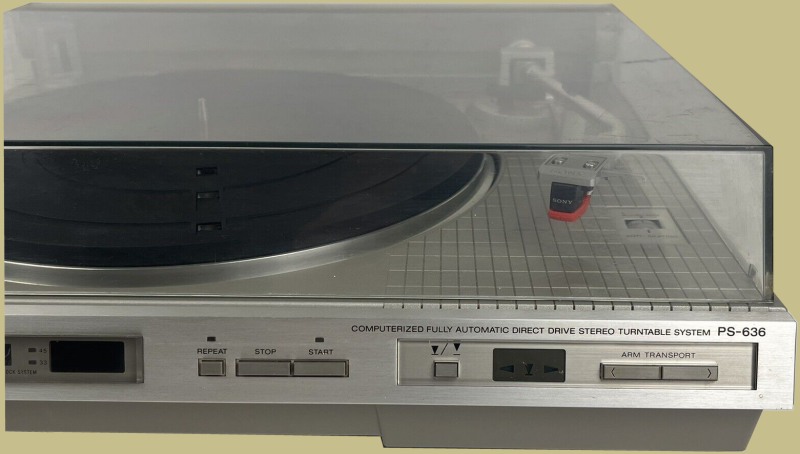
The Repeat button will re-cue the tonearm after it reaches then end of the LP and the start playing from the beginning again.
Many people think that the light post at the rear left corner of the turntable is used as a speed strobe light, but that’s not the case. That light is used to automatically detect the size of the record on the turntable. Once the size is determined it then automatically chooses the speed and where to position the tonearm before dropping the needle. One user mentioned an issue that can occur when an LP is made of colored or translucent vinyl. The light will fail to detect it and the turntable will not play. The solution is to cover the light and hit the play button. When the tonearm drops to the LP you can uncover the light and everything will work properly.

While the PL-636 is fully automatic you can still manually control the tonearm via the cueing and transport buttons at the right of the front panel. A small window with green LED’s will indicate the position of the arm via arrows. Some feel that the automatic tonearm transport system is too slow so they move the tonearm to where they want it manually and then push the cueing button to drop the needle.
In the advertisement for the PS-636 and related Sony components above you can see the light at the back left of the turntable that is used to determine the records size. That’s quite a sophisticated looking stack of audio equipment for 1980.
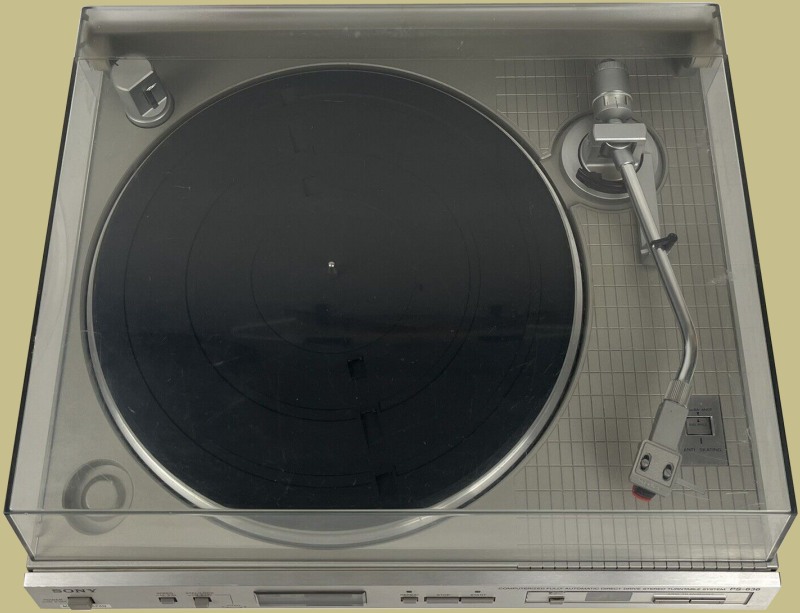
Basic operation of the Sony PS-636 is very simple. You place a record on the platter and press Start. That’s it. So, while it’s a complicated machine underneath, Sony engineers abstracted away the complexity so that the user can just focus on the music.
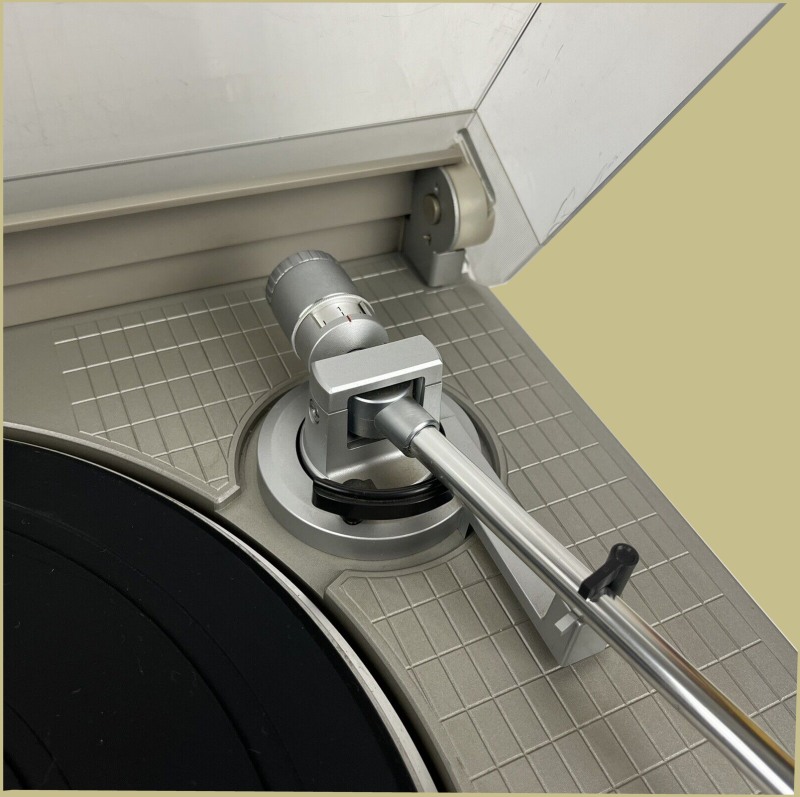
The PS-636 was shipped with the Sony VL-34G cartridge, which I believe was made by Audio-Technica, and the ND-134G stylus.
The anti-skate control has a range of 0-3 grams.
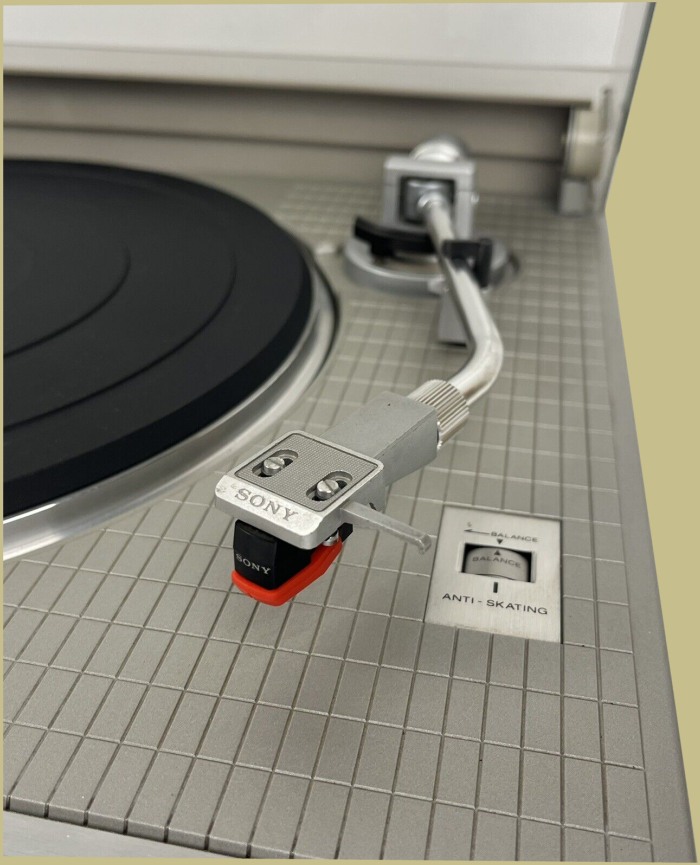
From the side, the Sony PS-636 has a sleek look to it. The front panel and dustcover are angled backward. Also note the interesting placement and design of the dustcover hinges. They are mounted inside the dustcover as opposed to most hinges being mounted outside on the back of the unit. While I’m not a huge fan of the look of the PS-636 from the front, I have to admit that the design of the tonearm base, rest and counterweight mechanisms really are elegant. And, the cross hatch design of the base around the tonearm area adds a futuristic look.
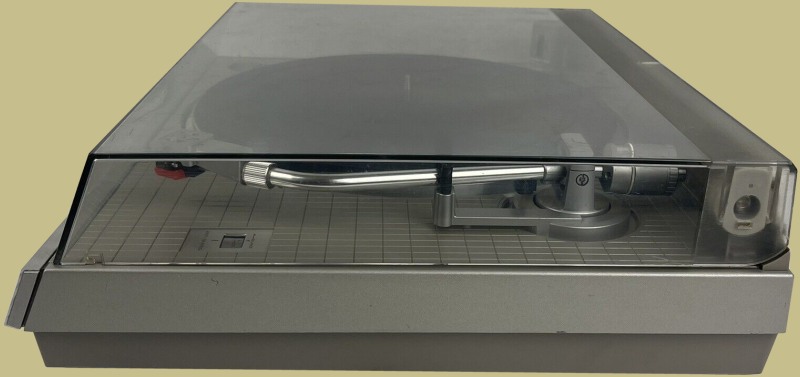
There’s an awful lot going on inside the PS-636 which increases the possibility of something going wrong. The complexity also makes it somewhat difficult to service. Parts are very difficult to come by and some of the chips are unobtainable. If you need a replacement part your best bet might be to wait for someone parting one out on eBay. Even then parts come up very rarely. If you want to see what parts are currently available for the PS-636 on eBay click HERE.
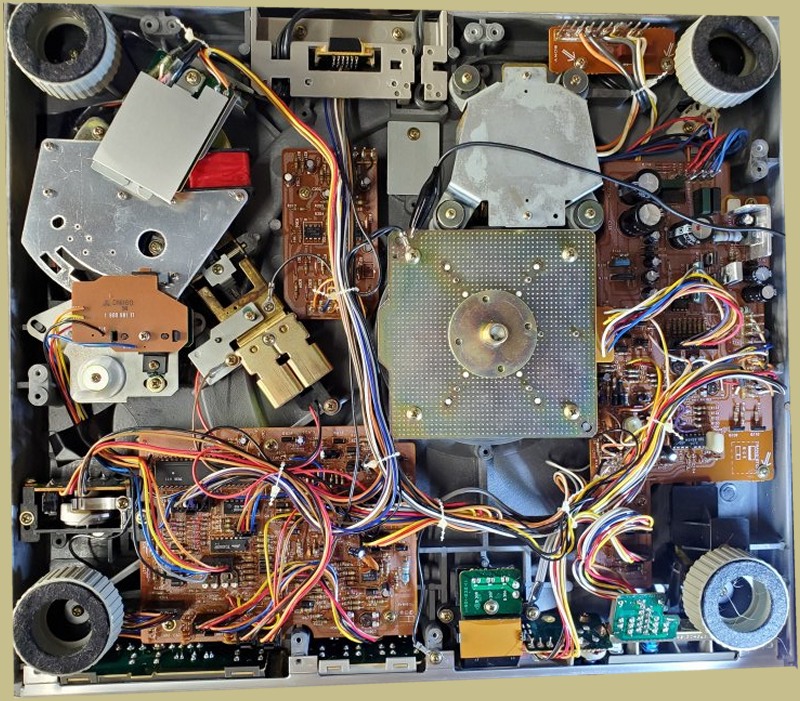
Specifications:
- Platter: 318mm aluminum alloy die-cast
- Motor: linear BSL (brushless and slotless) motor
- Drive system: direct drive
- Servo system: Xtal magnedisc servo control
- Speeds: 33 and 45rpm
- Pitch control range: +-6%
- Wow and flutter: 0.025%
- Signal to noise ratio: 70dB
- Automatic system: lead in, return, reject, repeat, record size selection
- Dimensions: 16.93 x 4.92 x 14.76 in (430 x 125 x 375mm)
- Weight: 17.4 lbs (7.9kg)
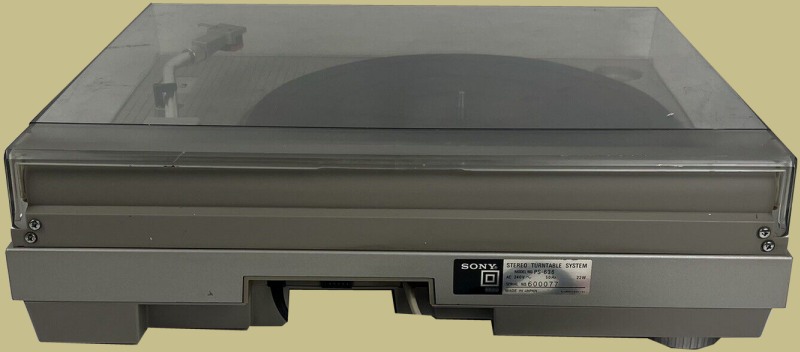
The Sony PS-636 really is a great turntable when it’s working properly. But, there is a lot that can go wrong in its sophisticated circuitry. While it has a somewhat low profile it is still a sturdy and fairly heavy turntable. It’s automated features make it very easy to use. The platter spins quietly and the XTAL system keeps it spinning smoothly at the correct speed. If you find a PS-636 that works properly it’s worth picking up just to experience the cutting edge of turntable technology in the early 1980’s.
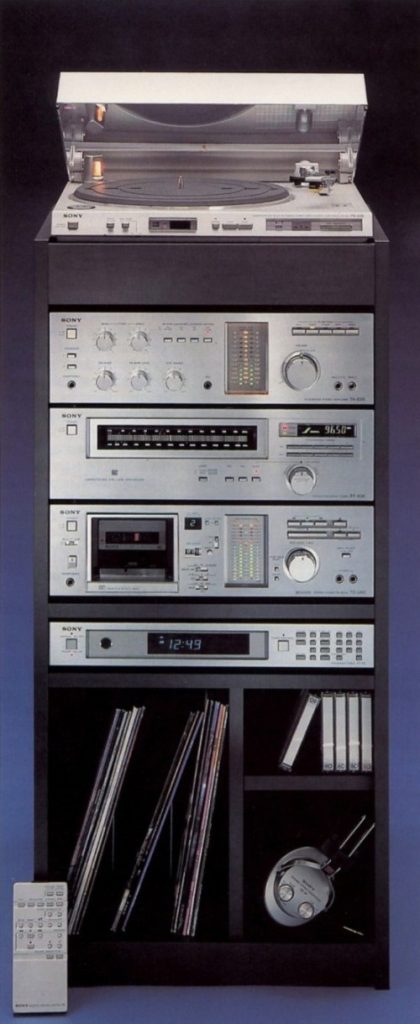

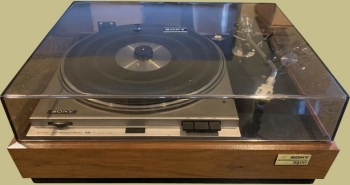
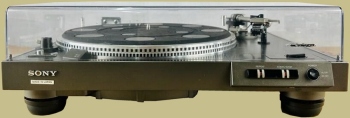
Thank you so Munch for the information. I have just bought a fully Worning model.
I have the Sony PS T15 which is great, but the 636 has bytter Numbers in the signal / nosse and also som and flutter.
Can´t wait to give it a listen.